Samsung QE55QN85A Review
Mini-LED, big fun


Verdict
Samsung has slightly democratised its ‘Neo QLED’ (mini-LED by any other name) technology by slightly lowering the asking price with very little discernible effect on performance. This is a fine and watchable TV, with a real facility with contrasts and a much slimmer frame than seems feasible.
Pros
- Vivid, naturalistic 4K image quality
- Slim and elegant
- Predictably outstanding smart TV interface
Cons
- No Dolby Vision
- Very occasional motion-handling travails
- Sound isn’t anything special
Key Features
- Quantum Matrix technologyMini-LED display for brighter images and deeper blacks
- Object Tracking SoundBuilt-in audio system tracks sounds across the screen
- FreeSync Premium ProSupports AMD’s advanced VRR technology for smoother gameplay
Introduction
Samsung would rather you call this a ‘Neo QLED’ TV, but we know the truth: it’s a mini-LED TV. What’s more, it’s part of Samsung’s most affordable range of mini-LED TVs. This is good news, because although the company’s QN95A mini-LED TV that we tested earlier this year is a great performer, it’s pretty pricey.
Of course, no one’s suggesting that the QN85A is a bargain; it’s a little more affordable than its big brother. However, the real question has to be whether the QN85A is a false economy?
Availability
- UKRRP: £1799
- USARRP: $1599
- EuropeRRP: €1699
- Canadaunavailable
- AustraliaRRP: AU$2499
The Samsung QE55QN85A is on sale now. Since its launch a month or two ago, we’ve seen prices fluctuate somewhat – but as of right now, it can be yours for £1499.
If you like the idea of the technology but think a 55in screen is on the tentative side, the QN85A is also available in 65in (£1999), 75in (£2499), and an intimidating 85in (£3999) screen size.
These prices bring the QN85A into more-or-less direct competition with some of the best OLED TVs around. The likes of LG, Panasonic and Sony – to name but three – all offer a high-performance TV of this size for very similar money.
Design
- 27mm deep
- Central pedestal stand
- Space for a soundbar
Naturally, when you’re spending proper money (as this is) on a TV, your primary concern is likely to be picture quality – but physical looks are important, too. Happily, the Samsung scores pretty highly here, thanks to a winning combination of a minimal bezel surrounding the screen and a consistent depth of just 27mm.
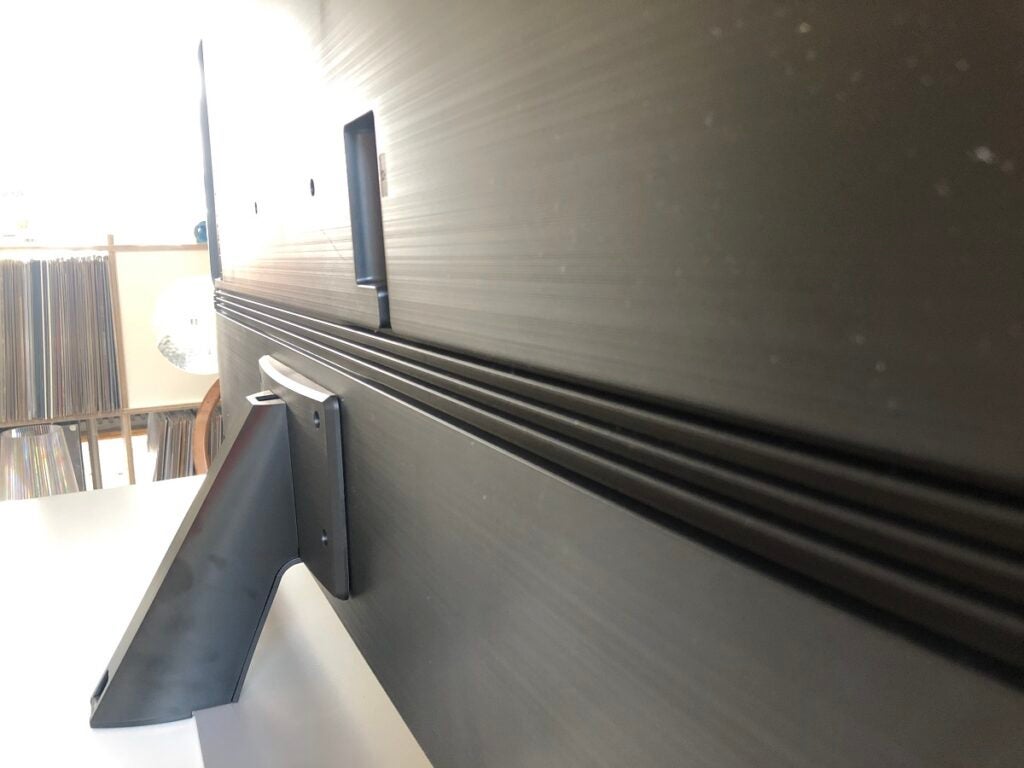
This makes the QN85A an authentic option for wall-hanging, unlike the majority of its OLED rivals whose incredibly thin rear is often interrupted by a big bulge where all the electronic componentry is stashed.
Should you decide against wall-hanging, though, the Samsung features a central foot on which to stand. This means you don’t need a surface as wide as the screen itself on which to place it. Plus, there’s space between the support and the bottom of the screen to position a soundbar (and, as we shall see, you might well want to give consideration to a soundbar sooner rather than later).
Features
- Choice of remote controls
- Ample connectivity, including HDMI 2.1
- Exemplary Tizen smart TV interface
It’s the panel technology that’s the most obvious headline here, so that’s where we’ll start. The mini-LED TVs I’ve seen so far have made good on their promise of improved black levels, better targeted and controlled backlighting, and peak brightness figures that put any and every OLED TV to shame – so fingers crossed the QN85A continues this brief but proud tradition. The panel here is of the IPS type, which ought to translate to ‘good viewing angles’ and ‘considerable reflectivity’.
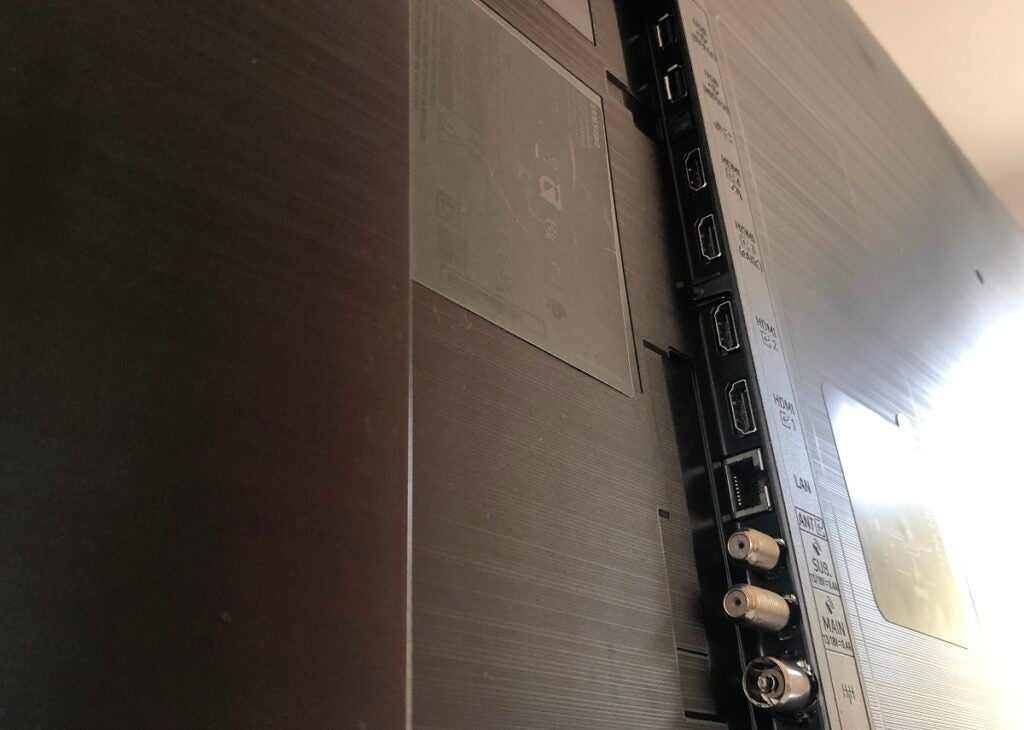
There are four HDMI inputs here, one with eARC compatibility and another that accommodates all the HDMI 2.1 features that can maximise a next-gen games console’s performance. These are joined by a couple of aerial binding posts for TV reception, an Ethernet input, and a couple of USB sockets. The digital optical output is handy, if for no other reason than you may have a soundbar that predates HDMI ARC. And there’s wireless connectivity, too, in the shape of Bluetooth 5.2 and dual-band Wi-Fi.
Samsung has fitted the QN85A with its 4K Neo Quantum processor, which is more than capable of dealing with every HDR standard. But this is Samsung, so there’s no Dolby Vision HDR. With every day that passes, this seems a more wilful, more eccentric and more annoying decision – but Samsung is nothing if not bloodyminded.
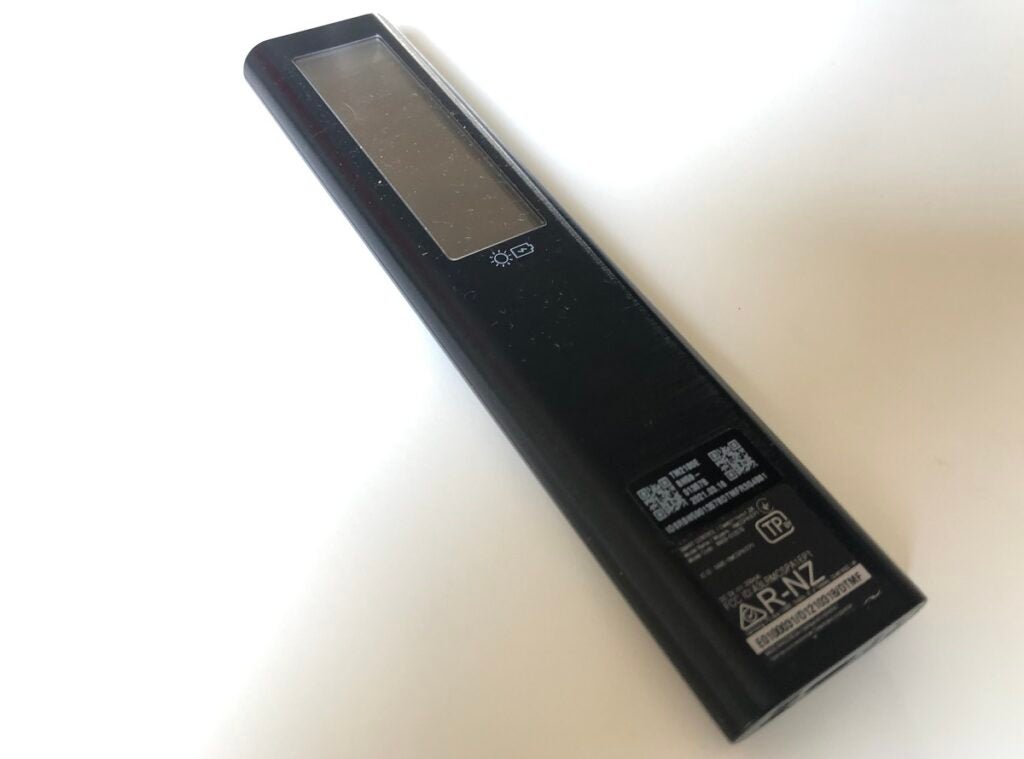
Control is available via either of the two remote controls that accompany the TV, or voice control, or Samsung’s Smart Things app. One remote handset is a disappointingly ordinary, cheap-feeling device with a multitude of buttons, many of which are too small, but with a comprehensive range of functionality. The other unit is svelte, solar-powered, quite expensive-feeling and a little more restricted in what it can do. Voice control is yours via Google Assistant, Amazon Alexa or Samsung’s own Bixby (yes, there’s Bixby but no Dolby Vision – go figure). The control app, meanwhile, is stable, clean and useful.
However, no matter the method of control you opt for, you’ll be in charge of Samsung’s Tizen-based smart TV interface, which remains one of the very best around. There’s no Freeview Play, which will be a minor niggle for UK customers, but it’s nevertheless stacked with apps and catch-up services, and is as navigable as these things get.
Picture quality
- Great black levels + great peak brightness = great contrasts
- Extensive colour palette
- Fine upscaling (up to a point)
Not surprisingly, the QN85A does its best work when given the best stuff to work with. And given its specification, ‘the best stuff’ means some 4K content with a bit of HDR10+ dynamic metadata thrown in. So line up an Amazon Prime Video stream of the unintentionally hilarious Manchester City: All or Nothing and prepare to bask in the QN85A’s prodigious picture-making talents.
What’s most immediately impressive, given this is fundamentally an LCD panel, is the depth of black tones. Naturally, they’re not as inkily bottomless as the OLED equivalent; but by the standards of LED-backlit LCD TVs, they’re super-impressive. Then there’s backlighting control: it’s splendid. Even with small areas of light on an otherwise dark background, there’s no blooming or haloing here – just precise, measured and convincing illumination that comes from more than 500 individual dimming zones. These all combine with that hefty peak brightness (at least 1500 nits) to deliver extremely wide contrasts.
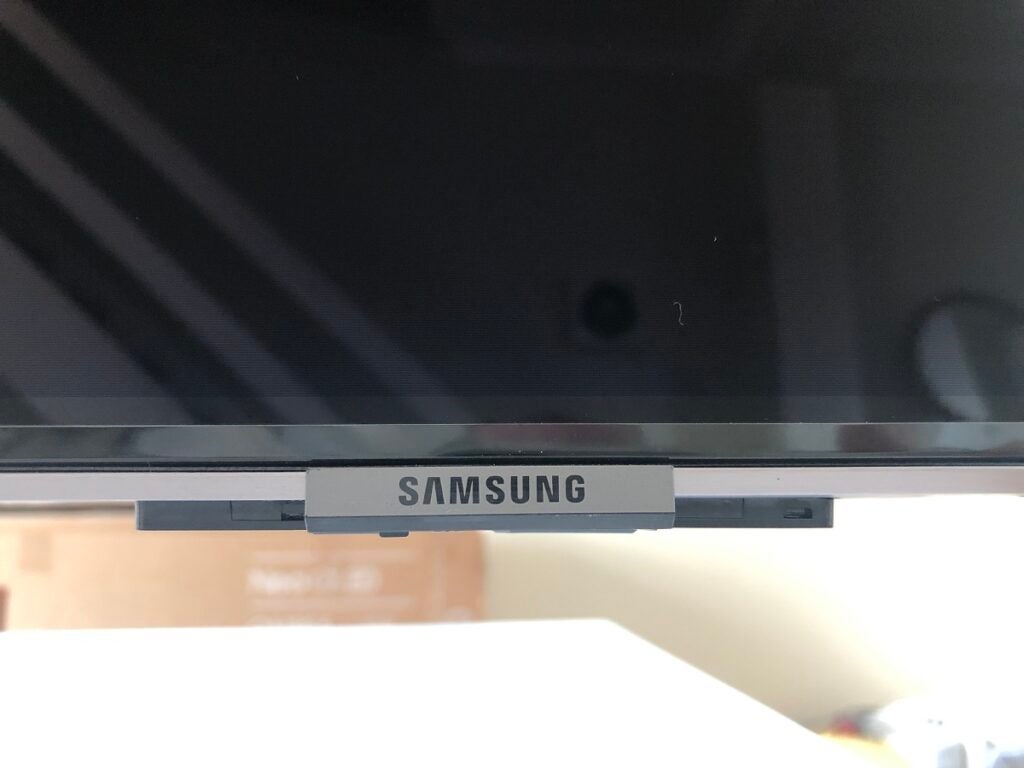
In between black and white, there’s a seemingly limitless amount of variation in the Samsung’s colour palette. The subtleties of shade variation are described just as fully as the vibrant-yet-naturalistic primary tones. So it follows that skin-tones and skin-textures (of which there are plenty during the course of a football ‘documentary’) are absolutely convincing.
Overall detail levels are extremely high, which only adds to the lifelike impression of the Samsung’s pictures. Edge definition is generally smooth, and when it’s required there’s a persuasive suggestion of depth of field available, too.
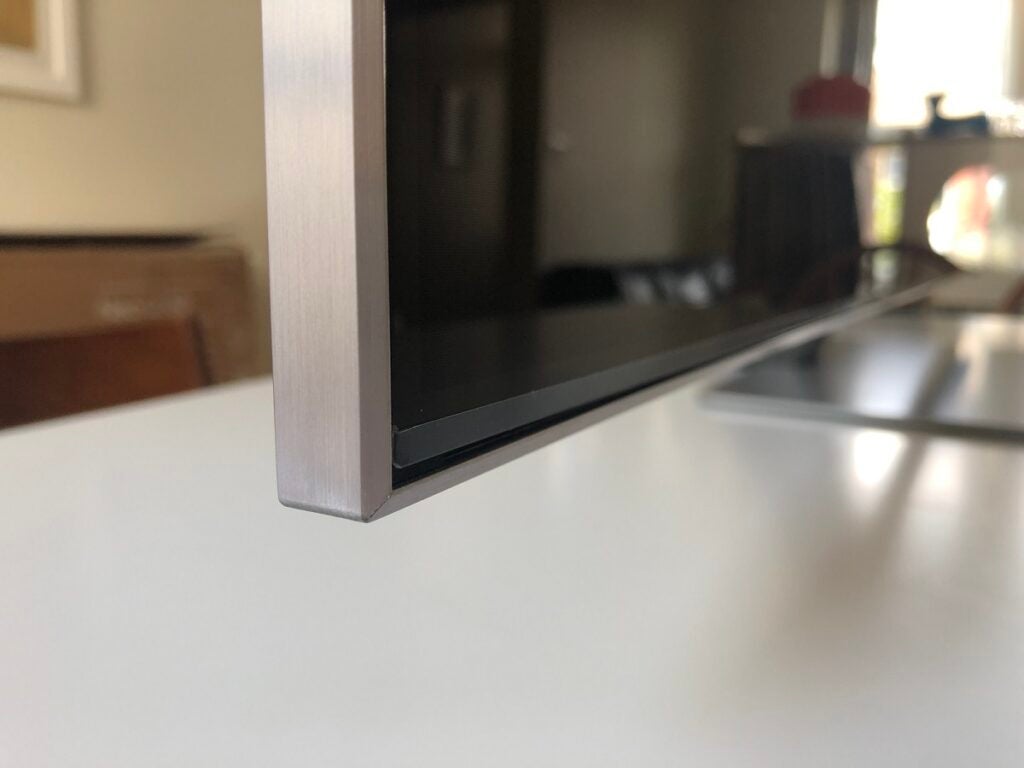
In addition, as an upscaler of less information-rich content, the Samsung is every bit as impressive. No, your Full HD movies and games aren’t going to miraculously gain some 4K sheen. Nevertheless, contrasts remain wide, edges remain stable, and detail levels remain considerable. A 1080p Blu-ray of Zack Snyder’s Watchmen is colourful, stable and confidently presented.
About the only area where the QN85A doesn’t excel is motion control. The Manchester City-based content is filled with instances of rapid, complex on-screen movement, and when the going gets especially trying, the Samsung can give away how hard it’s working. Some minor edge-shimmer is the most common tell-tale, with ghosting and image-doubling so rare as to be negligible.
Dip below Full HD content and the QN85A can get a little sniffy. In particular, it appears to deem standard-definition TV broadcasts to be a bit beneath it – the images that result from tuning in to a daytime TV re-run of some 30-year-old drama seem unnecessarily coarse and ill defined. Certainly, some of the comparably priced OLED TVs previously mentioned don’t get such obvious attacks of the vapours when asked to slum it a little.
Sound quality
- Insubstantial overall sound, 60W notwithstanding
- ‘Object Tracking Sound’ doesn’t particularly track objects
- Consider a soundbar a minimum investment
It isn’t like Samsung hasn’t tried where the sound of the QN85A is concerned – 60W powering four full-range drivers in a mild version of the company’s ‘Object Tracking Sound’ arrangement says as much. And yet sound quality is as far removed from picture quality here as an Aston Martin is from a go-kart.
It’s never actively unpleasant or shouty, even at volume. But it’s bland, undemonstrative and strangely boneless – which means you’ll likely need to invest in a soundbar. And be sure to pay special attention to Samsung’s ‘Q Symphony’ range – they allow the screen’s speakers to contribute to the overall sound rather than being overridden by the soundbar.
Should you buy it?
You like to watch the best content With 4K HDR discs and streams, the QN85A looks great – and it’s a very capable upscaler of 1080p content, too.
You’re expecting sound quality to match picture quality There’s no easy way to say this, so we may just as well say it: the QN85A is a tedious and uninvolving listen.
Final thoughts
Considered purely in terms of picture quality, the Samsung QE55QN85A is almost entirely admirable. Content of 1080p standard and above looks an absolute treat, even if the QN85A isn’t the most surefooted TV around when it comes to motion-processing.
As an object, too, it’s a lovely looker – especially if you want to hang it on the wall. Ignore the humdrum sound (it’s far from the only TV to sound uninspiring) and the lack of Dolby Vision (because Samsung is nothing if not contrary) and this is an excellent investment.
How we test
We test every TV we review thoroughly over an extended period of time. We use industry standard tests to compare features properly. We’ll always tell you what we find. We never, ever, accept money to review a product.
FAQs
No, but the QN85A does include all the UK catch up apps.








